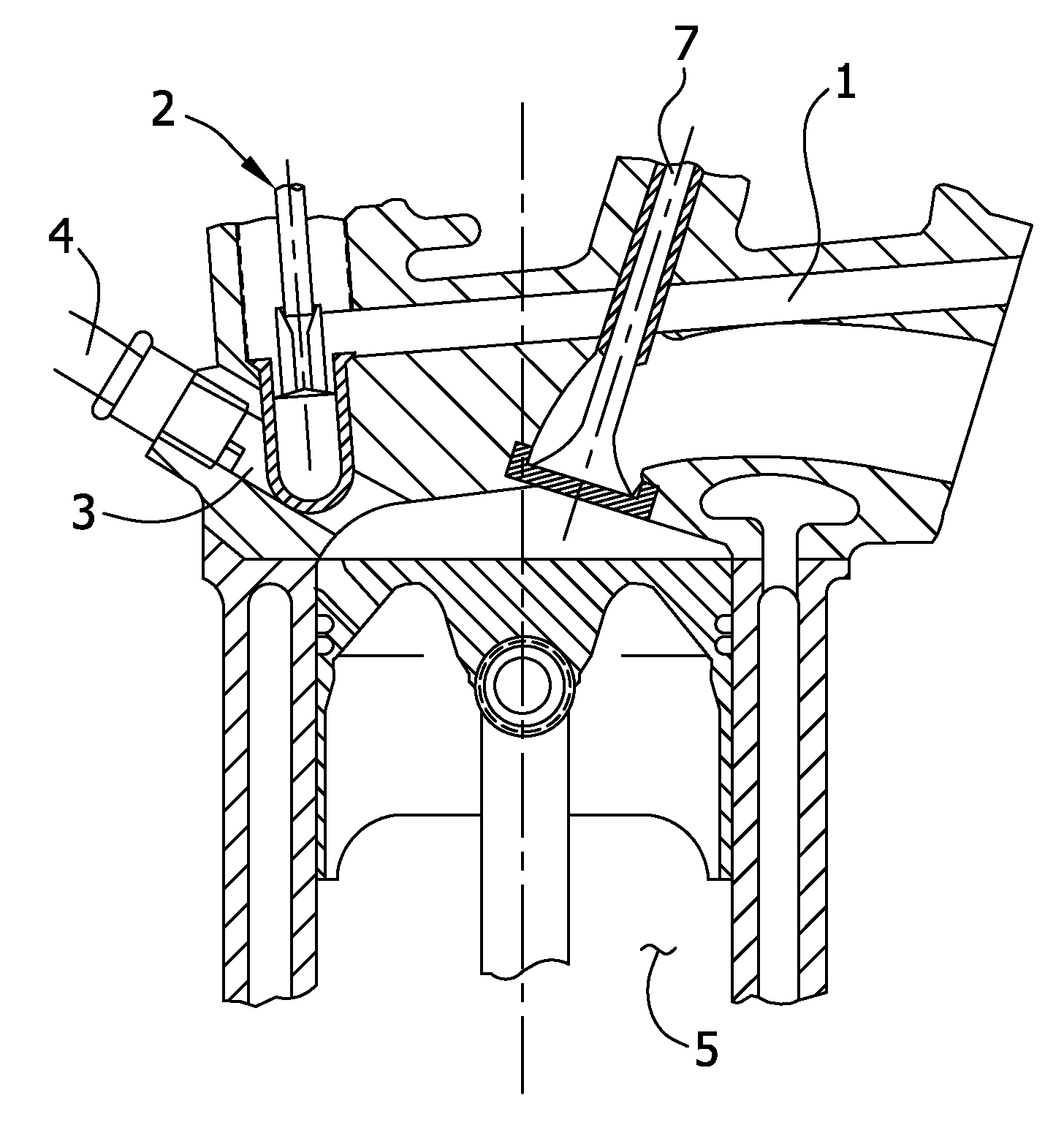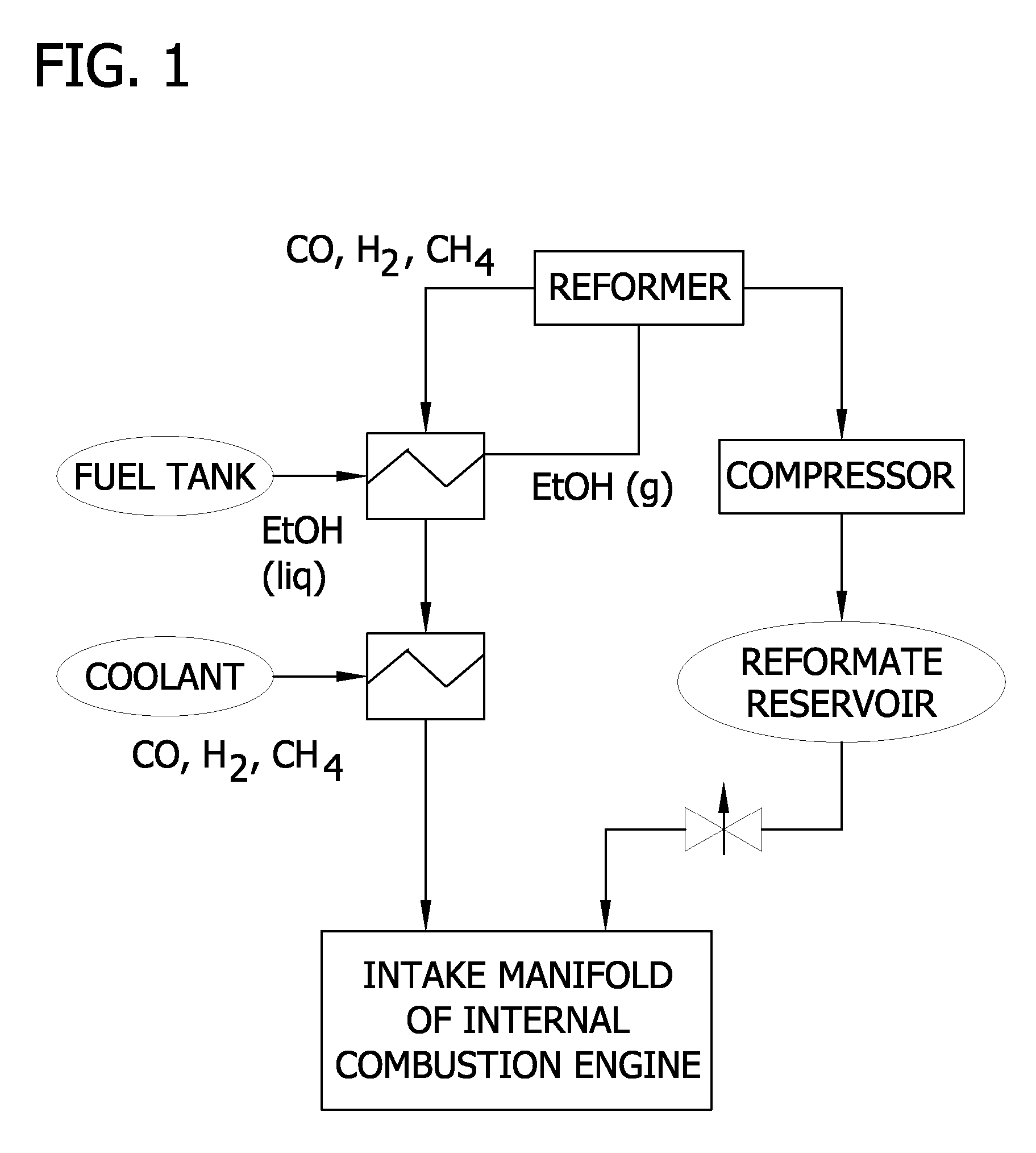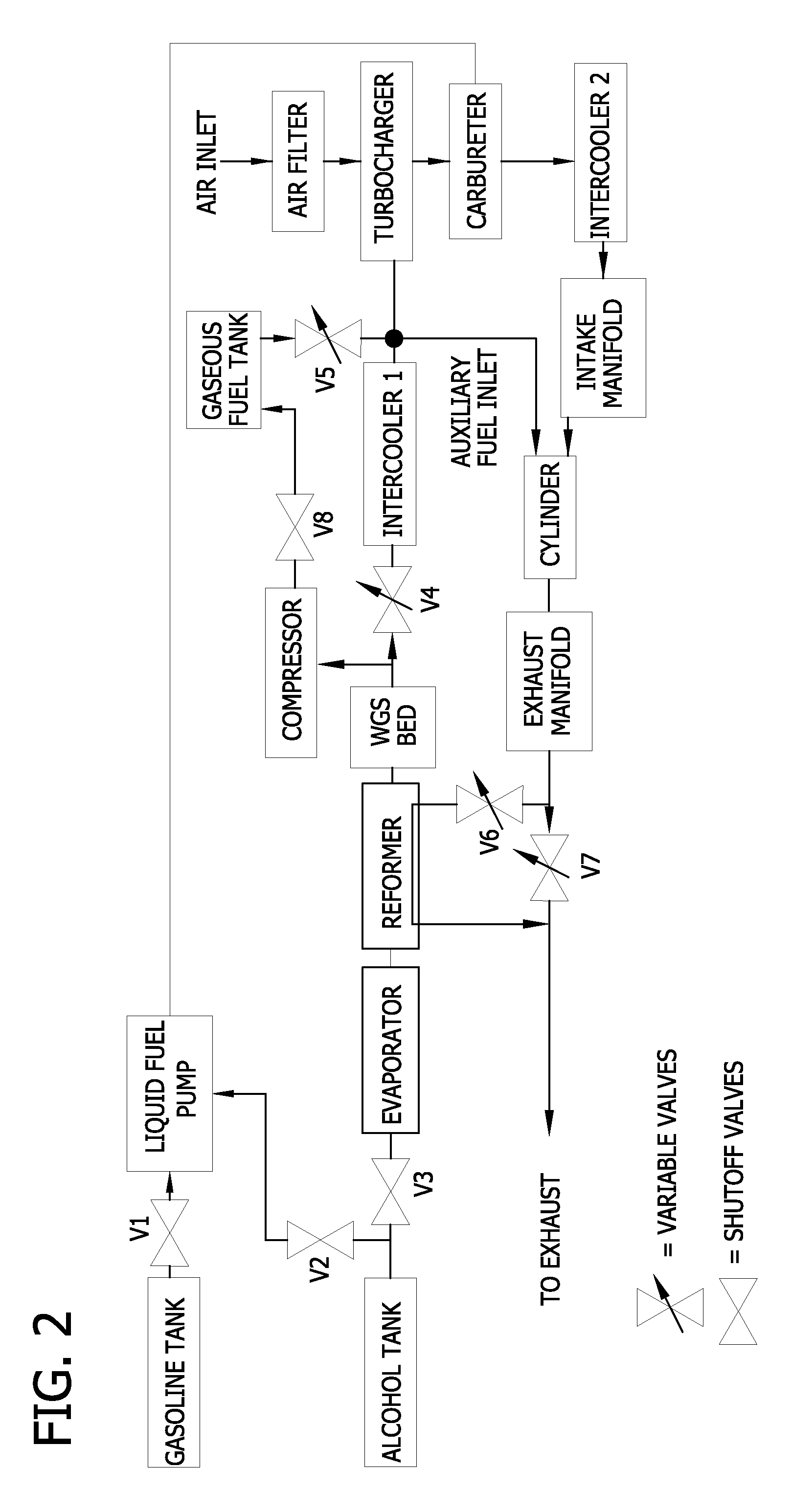Reformed alcohol power systems
a power system and alcohol technology, applied in the direction of machines/engines, combustion air/fuel air treatment, bulk chemical production, etc., can solve the problems of reducing the value of ethanol to the consumer on a volumetric basis, difficulty in internal combustion engines using alcohol fuels,
- Summary
- Abstract
- Description
- Claims
- Application Information
AI Technical Summary
Benefits of technology
Problems solved by technology
Method used
Image
Examples
example 1
Copper Plating of a Stainless Steel Preheater for Ethanol Reforming
[0145] This Example describes copper plating of a preheater used to heat an ethanol stream upstream of the catalyst bed in order to suppress side reactions catalyzed by the steel. The preheater consists of a vertically-mounted length of 316 stainless steel tubing (½″ o.d. (1.27 cm), ⅜″ i.d. (0.95 cm)) heated with a coil heater. In operation, ethanol is pumped through a tube (⅛″ o.d. (0.32 cm)) also wrapped around the heater. The ethanol then passes upward through the preheater. The heater is controlled with a temperature controller which senses the temperature of gas exiting the preheater.
[0146] The copper plating was applied to a 316 SS preheater tube (100 g) using a peristaltic pump to circulate a simple copper-plating bath through it. The bath was composed of CuCl2 (5.37 g) acidified with concentrated HCl (15 g) in deionized water (135 g) in order to remove oxides and allow the entire interior surface of the tub...
example 2
Scaled Up Copper Plating of Nickel Sponge with Drying
[0147] This example demonstrates that copper plating of a nickel sponge support by electrochemical displacement deposition can be effectively conducted at high solids loading. The use of high solids loading reduces the cost of catalyst production by improving the productivity of the process and reducing the volume of wastewater. In order to further reduce cost, the amount of copper used in the second (acidic) step of the plating process has been decreased from 25% to 10% of the nickel sponge substrate mass.
[0148] The amount of NaOH used was reduced from 1.5 equivalents to 1.0 equivalents (based on the amount copper in the plating bath). Enough gluconic acid buffer was used to supply the protons required to disproportionate the Cu2O formed in the first step:
Cu2O+2H+→Cu2++CuC+H2O
[0149] This example further shows that the copper-plated nickel sponge catalyst can be dried and safely handled thereafter. When dry, the catalyst does ...
example 3
Ethanol Reforming with and without a Copper Plated Preheater
[0156] Anhydrous ethanol was reformed over dry copper-plated Raney nickel (2.5 g) produced by the process of Example 2 at 280° C. at a feed rate of 0.07 ml / min. The preheater used upstream of the catalyst bed was not copper plated. Coking caused backpressure to develop in the preheater, forcing the experiment to be terminated after 36 hours.
[0157] The plugged preheater was replaced by a copper-plated stainless steel tube prepared by the process of Example 1. Anhydrous ethanol was reformed for 118 hours with the same catalyst at a temperature of 280° C. at a flow rate of 0.07 ml / min. The catalyst was not replaced. Coking was not observed. Pressure remained below 3 psig (144 mm Hg gauge) Ethanol breakthrough rose from 4% to 16% over the first 75 hours and then leveled off.
PUM
 Login to View More
Login to View More Abstract
Description
Claims
Application Information
 Login to View More
Login to View More - R&D
- Intellectual Property
- Life Sciences
- Materials
- Tech Scout
- Unparalleled Data Quality
- Higher Quality Content
- 60% Fewer Hallucinations
Browse by: Latest US Patents, China's latest patents, Technical Efficacy Thesaurus, Application Domain, Technology Topic, Popular Technical Reports.
© 2025 PatSnap. All rights reserved.Legal|Privacy policy|Modern Slavery Act Transparency Statement|Sitemap|About US| Contact US: help@patsnap.com



